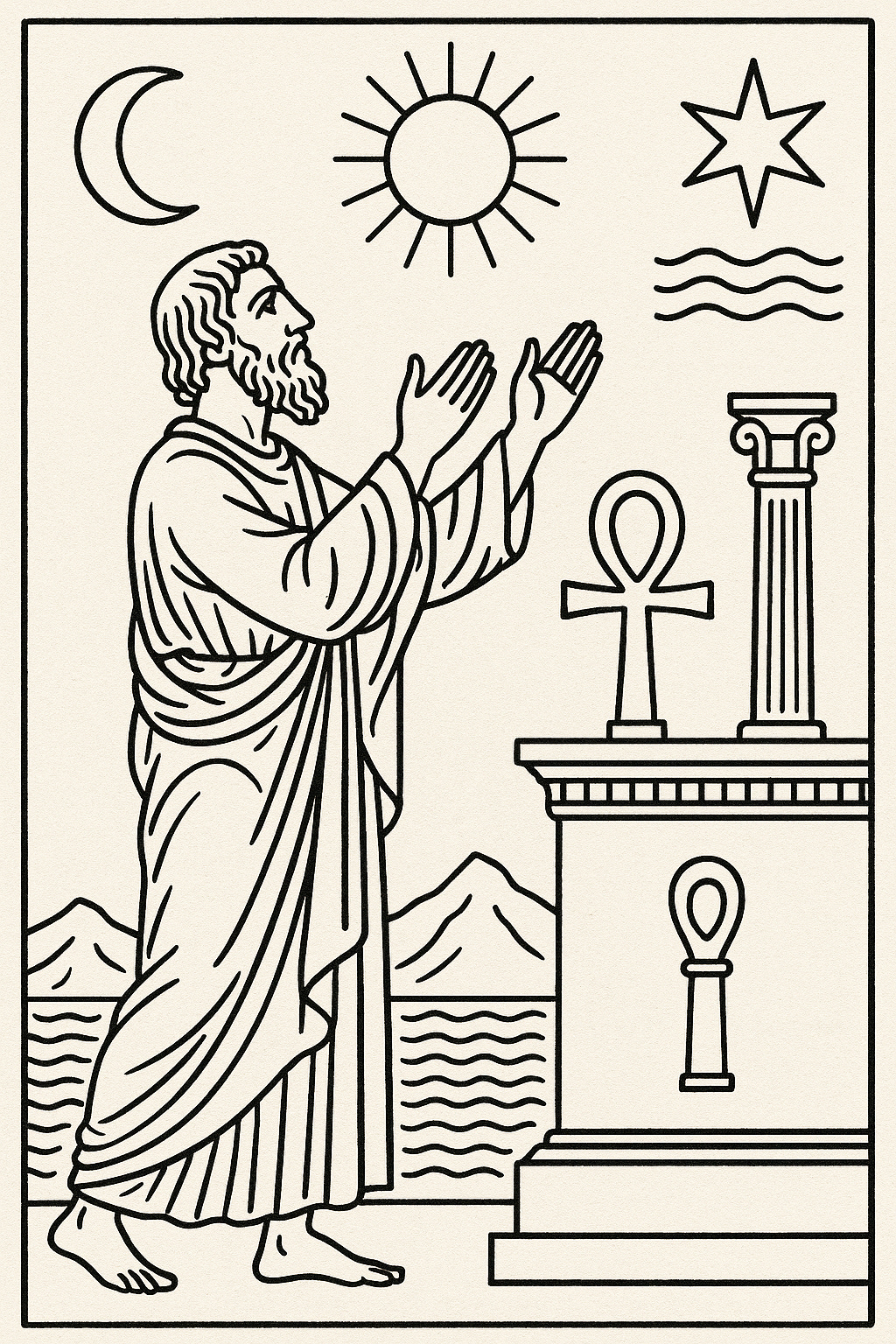Class Report: Proclus the Hierophant
Relatório de Aula: Proclo, o Hierofante
Dear readers,
In this class, we followed Proclus into the purificatory virtues and explored his life as hierophant of the whole world. We discussed how his practice of universal worship—honoring gods from different lands and calendars—embodies a form of purification, not by rejecting the world, but by sanctifying every part of it. Here’s a snippet:
I tried out a thought: philosophy starts with images—things that are at once likenesses of Forms and also unlike them because they’re in space and time. In the Republic he gives the example of our fingers that seem both to be bigger and smaller at the same time. Maybe theurgy starts with symbols that are contradictory in value rather than in concept: the sea is both a place of cleansing and the realm of generation. Engaging that push–pull—attraction and repulsion—could do for our will and affections what Socratic elenchus does for our opinions: it exposes conflicts and purifies.
Iamblichus even notes (against Porphyry) how the gods can both forbid and cause certain acts—love-magic, blood in sacrifice. The sacred often arrives as a double sign. Yitzchok connected this to anthropology: in some cultures “holy” and “unclean” share taboos and vocabulary. I agreed and contrasted image (cognitive contradiction) with symbol (volitional contradiction)—two different kinds of knots that, when pulled correctly, loosen the soul.
If you enjoy these class reports, please share them and invite others to subscribe.
(Link to download comes after the Portuguese section.)
Caros leitores,
Nesta aula seguimos Proclo até as virtudes purificatórias e exploramos sua vida como hierofante do mundo inteiro. Discutimos como sua prática de adorar deuses de diferentes povos e calendários encarna uma forma de purificação — não pela rejeição do mundo, mas pela santificação de cada parte dele. Um excerto traduzido:
Tentei formular um pensamento: a filosofia começa com imagens — coisas que são ao mesmo tempo semelhanças das Formas e diferentes delas por estarem no espaço e no tempo. Na República, Platão dá o exemplo dos nossos dedos, que parecem ser ao mesmo tempo maiores e menores. Talvez a teurgia comece com símbolos que são contraditórios em valor, e não em conceito: o mar é ao mesmo tempo lugar de purificação e de geração. Lidar com essa tensão — atração e repulsa — pode fazer pela nossa vontade e pelos nossos afetos o que o elenchos socrático faz pelas opiniões: expor conflitos e purificar.
Jâmblico observa (contra Porfírio) que os deuses podem ao mesmo tempo proibir e causar certos atos — magia amorosa, sangue em sacrifício. O sagrado muitas vezes se apresenta como um duplo sinal. Yitzchok relacionou isso à antropologia: em algumas culturas, “sagrado” e “impuro” compartilham tabus e vocabulário. Concordei, e contrastei imagem (contradição cognitiva) e símbolo (contradição volitiva) — dois tipos diferentes de nós que, puxados corretamente, afrouxam a alma.
O texto completo do relatório está em inglês, mas este trecho traduzido dá uma ideia do tom e do tema.
🜍 Become a paid subscriber for regular class reports and essays on Neoplatonism, theurgy, and philosophy as spiritual practice.
(O link para download está abaixo do paywall.)
Keep reading with a 7-day free trial
Subscribe to @philoantonio to keep reading this post and get 7 days of free access to the full post archives.


